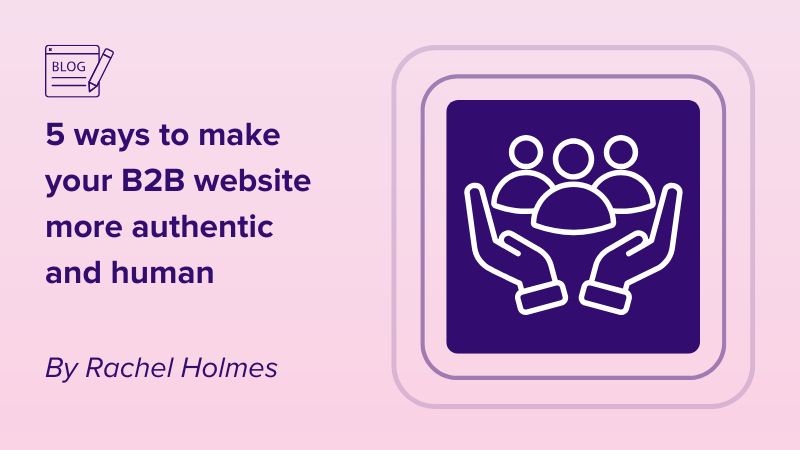SEO (search engine optimization) has long reigned supreme in the world of digital marketing. But as CRO (conversion rate optimization) becomes increasingly popular, some marketers worry that their ranking will take a hit when implementing CRO improvements. However, there’s no need for a power struggle between the two. With techniques like B2B website personalization, your CRO strategy can work hand in hand with SEO to improve your online presence and increase traffic, conversions, and ultimately, business growth.
CRO and SEO: How do they differ?
Conversion Rate Optimization (CRO) is the process of increasing the percentage of website visitors that take a desired action, such as demo requests and eBook downloads. CRO focuses on improving the quality of the conversions, unlike SEO strategies that try to drive more traffic to your site. (If you need help mastering your 2024 CRO strategy, check out this blog!)
Where CRO focuses on increasing the quantity and quality of conversion, SEO aims to increase the quality and quantity of organic traffic by boosting your website’s rankings in organic search engine results. Many factors come into play when developing an SEO strategy, and one of the main influences on ranking is how well your website is performing. This is where the two strategies can meet in the middle.
How to synchronize CRO and SEO
Yes, the main goal of SEO is to secure a spot amongst the top-ranking pages. But that’s only half of the challenge. What’s the point in attracting visitors to your site if you don’t show them the most relevant and engaging information about your business?
Here are three tips to help you resonate with every visitor.
Create content that matches search intent
All B2B marketers know that content is king when it comes to ranking higher. Without content, Google has nothing to base its ranking on. Google’s secret recipe for determining search term rankings is complex, but its main objective is to display results that answer the searcher’s query.
Therefore, creating content that is relevant to search queries must be your go-to strategy, whether that’s blogs, product pages, or anything else. This approach will ensure you continue to drive more traffic to the site whilst also showing visitors relevant information, boosting their chance of converting.
Optimize content for conversions
Now you have created content that is relevant to search queries, you need to push for a conversion. The best way to hit a home run is by including a CTA within your content. For example, at the end of a blog, you might direct visitors to a product page that has a “book a demo” button.
Or, if it’s your product page that is ranking (for middle- and bottom-of-the-funnel visitors), ensure you include a CTA that will guide them to the next stage in their journey, such as a contact form. By writing content that meets the needs of the visitor, you are improving their experience, making them more likely to convert.
Personalize your webpages
Personalization is an excellent way to attract visitors’ attention when they click on your website—yet it can be tricky to execute. For example, if you add website personalization to your CRO strategy and change page content, but your SEO team has created this content to support their rank, will your ranking suffer?
Thankfully, if you choose your CRO tool wisely, your SEO efforts won’t take a hit. For example, with a B2B website personalization tool like Webeo, you can adapt webpage experiences for each visitor without needing to change the actual site content. The result? Personalization that’s powerful for CRO and doesn’t interfere with SEO.
Benefits of CRO and SEO alignment for business growth
Improved user experience
CRO and SEO both play a part in improving the user experience of a B2B website. CRO enables you to test different versions of a webpage, such as changing copy, imagery, and layout. Plus, by optimizing your website for search intent using SEO, you ensure that visitors easily find what they’re looking for. Better user experience encourages visitors to stay on your website for longer, which increases their chance of conversion and shows Google that visitors don’t bounce straight off—hence, improved rank.
Increased conversion rates
The whole purpose of CRO is to increase conversion rates by ensuring your website is relevant for each visitor. SEO helps you rank for relevant keywords, meaning the traffic landing on your site is high quality. By also increasing conversion rates through CRO, you’ll prove to Google that visitors are finding what they’re looking for, which also positively affects SEO.
Increased ROI
CRO and SEO are both resource-heavy and can be expensive strategies to implement. However, by ensuring they don’t work in silos, you can increase traffic whilst delivering more leads. The outcome will not only increase ROI from CRO and SEO but your entire digital marketing strategy.
Faster site speed
Site speed is a big deal for Google when ranking websites and is also relevant in CRO. Slow site speed is frustrating, and a lagging website naturally leads to higher bounce rates and lower conversions. Aligning CRO and SEO helps you improve site speed, as it’s an essential addition to both strategies.
Improved PPC performance
You can directly impact the conversion and success rates of PPC ads by optimizing the pages your PPC campaigns take visitors to. Enhancing PPC landing pages also improves the overall site experience, guaranteeing a higher SERP rank and reduced PPC costs.
Rank and convert simultaneously for business success
CRO and SEO strategies both rely on making alterations to website content—CRO handles design, and SEO is concerned with content. The two don’t need to tussle for priority. Choosing wisely with CRO tools like Webeo means you can optimize your website to convert traffic without getting in Google’s bad books.
To find out how you can optimize CRO without negatively impacting your SEO efforts using B2B website personalization, get in touch and we can take you through our best practice approach to increase website conversion.




